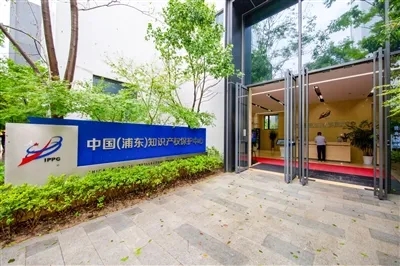Pudong to strengthen IPR protection in 14th Five-Year Plan period

The China (Pudong) Intellectual Property Right Protection Center is unveiled in July 2017. [Photo/Official Wechat account of China (Shanghai) Pilot Free Trade Zone]
Pudong New Area in East China's Shanghai recently released an action plan for its intellectual property development during the 14th Five-Year Plan (2021-25) period and pledged to enhance intellectual property rights (IPR) protection according to international standards.
Pudong had made impressive achievements with regard to intellectual property development during the 13th Five-Year Plan (2016-20) period. By the end of 2020, more than 184,000 patent applications were filed in Pudong, with over 111,000 approved. About 34,000 of these applications were for invention patents.
In addition, Pudong had an average of 90 invention patents and 30 high-value invention patents for every 10,000 people.
The latest action plan aims to double Pudong's success in the next five years. The average number of high-value invention patents owned by every 10,000 people is expected to surpass 50; international patent applications are expected to exceed 1,000; intellectual property disputes that are reconciled successfully are expected to reach 650.
According to the plan, Pudong will build a better IPR protection mechanism and become China's highland for IPR protection by the end of 2022. By the end of 2025, Pudong would have significantly improved its IPR governance and become a highland in the Asia-Pacific region.
Pudong will also initiate six IPR protection projects, including a copyright service center in China (Shanghai) Pilot Free Trade Zone, to optimize its business environment.
More efforts will be made to unlock intellectual property's economic value, consolidate the supervision system, apply information technologies to IPR management, and improve government services.
According to He Ying, deputy director of Pudong's administration for intellectual property, some proposals included in the action plan are currently being implemented. For example, a work plan has been made to set up service stations in companies that are looking to go public on China's science and technology innovation board to help with risk prevention and control, as well as handling disputes related to IPR.


 China's public holidays for 2025
China's public holidays for 2025  Shanghai FTZ: Go all out to build China's first pilot zone for Silk Road E-commerce cooperation
Shanghai FTZ: Go all out to build China's first pilot zone for Silk Road E-commerce cooperation  Favorable policies boost 'China Travel' trend
Favorable policies boost 'China Travel' trend  play
play 